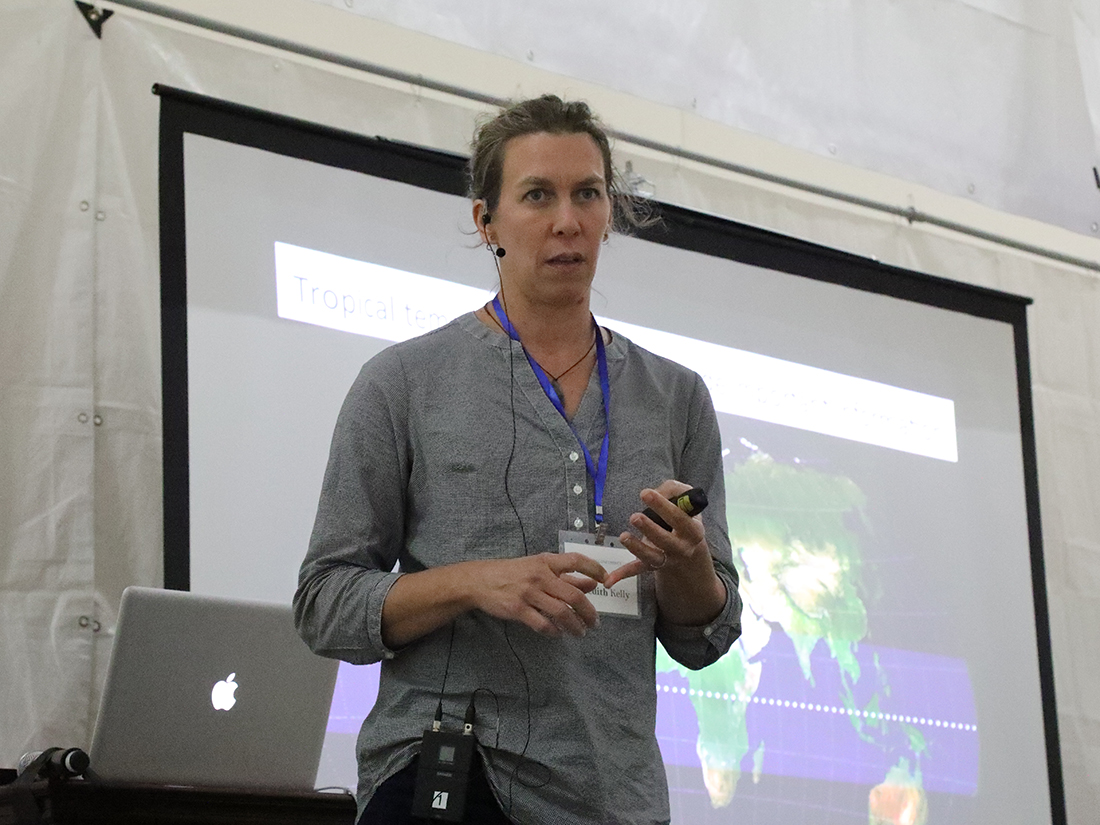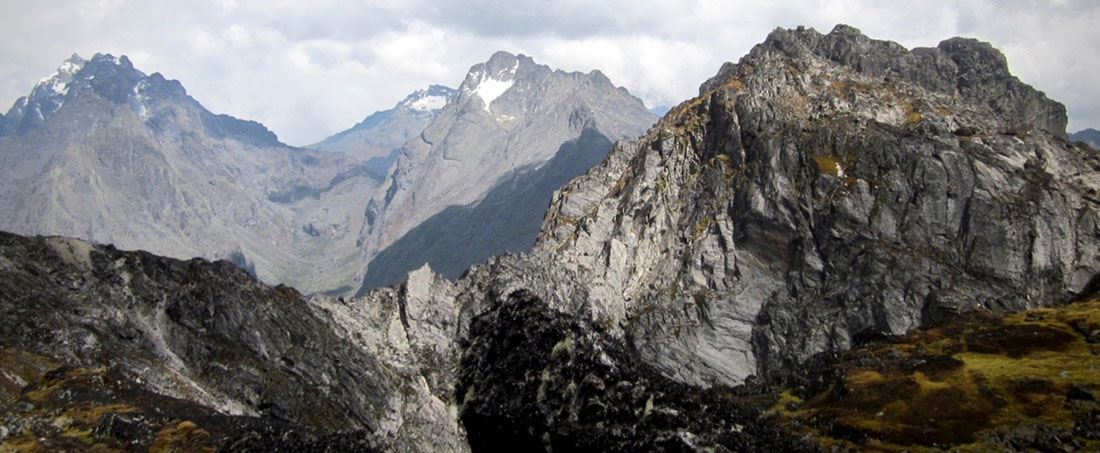Madhurita Goswami
Medill Reports
Most of us associate glaciers with Antarctica or the northern ice-sheets of the Arctic and Greenland. It may come as a surprise that scientists Alice M. Doughty and Meredith Kelly are studying tropical glaciers at the Rwenzori Mountains of Uganda to improve our understanding of climate change.
The Rwenzori lies only 23 minutes north of the Equator and almost 30 degrees east of the Prime Meridian. There are glaciers here because the life cycle of tropical glaciers isn’t about location but height. Reaching Rwenzori’s glaciers means climbing at least 4,000 meters (more than 13,000 feet) above sea level just to get to the foot of them. Still, in a warming world, height can’t protect these once mammoth ice formations as they rapidly retreat.
Even for Kelly, the term glacier raises images of classic ice masses in the Swiss Alps, which partially melt during the summer and then grow again in the winter due to snowfall.
“Tropical glaciers are really different because summer and winter temperatures are almost the same,” said Kelly, an associate professor of Earth Science at Dartmouth College.

Studies on tropical glaciers have confirmed that they reached their maximum extent around the same time that high-latitude glaciers were at their maximum during the last great ice age some 18,000 years ago. This tells scientists that there was a synchronized warming at the end of the last ice age.
“Tropics are located far from mechanisms of climate change such as summer insolation [exposure to the sun] in northern high latitudes or direct effect of ice-sheets. So, they might be responding to CO2 (carbon dioxide) or other mechanisms we haven’t defined yet,” Kelly said at the 2019 Comer Climate Conference held in southwestern Wisconsin in early October.
CO2 is a greenhouse gas is warming the Earth as it collects in the atmosphere at ever higher levels due to emissions from human use of fossil fuels that include coal, gasoline and natural gas.
Kelly proposed that the temperature gradient between the poles and the tropics might have played a role. When the gradient is smaller, there is less outflow of heat from the tropics.
For a long time, scientists puzzled over factors driving changes in tropical glaciers. Initially, they attributed the main cause to precipitation as seasons in the tropics can be divided into wet and dry.
However, “tropical glaciers couldn’t have advanced (during the last glacial maximum) due to precipitation alone. There had to have been substantial cooling at high altitudes,” said Doughty, a visiting assistant professor of geology at Bates College. “We don’t have strong thermal seasons in the tropics. So, these glaciers were/are responding to what’s happening in the tropical atmosphere.”

A vast number of tropical glaciers are in the Andes in South America. Others are on Mt. Kenya in Kenya, Mt. Kilimanjaro in Tanzania and the Rwenzori Mountains in Uganda and the Democratic Republic of Congo. Some are located in Papua, New Guinea.
“It takes a village” – How locals are helping researchers in Uganda
Researchers studying tropical glaciers, which are relatively small, face some unique challenges. Not the least of them is having to hike up mountains with their equipment for days on end. They can’t reach the sites by helicopters or cars. Local guides, who know the mountain trails, become essential to their success.
Moraines (ridges of boulders) left behind by retreating glaciers are used to determine their past extents. However, looking for boulders in the Rwenzori Mountains is like playing a game of hide and seek, said Doughty, who works on glacial modelling. As many as 58 people have to work on finding these boulders in the woods. “It takes a village,” said Doughty.
“It is difficult to find these boulders as they are covered with vegetation, which can be up to a meter thick,” said Kelly, who samples the moraine boulders. In this case, too, locals help to cut down the overgrowth with their machetes.
The mat of vegetation conceals massive gaps between boulders, Doughty said and hinted at the risk of accidents. But walking is the only way to find boulders, which can’t be spotted from space or with drones.

Doughty, at first, was uncomfortable with the idea of guides and porters, and the dynamics of teaming everyone together. “So, we talked about jobs in the area. In mountain communities, being a porter is a huge part of that and some were raising money to go to college. I realized we were supporting the economy,” she said.
Rwenzori is also the name of a national park managed by a government agency, the Uganda Wildlife Authority, and it also runs the porter service. “We have really benefited from its system, which allows us to find collaborators in Uganda,” Kelly said.


